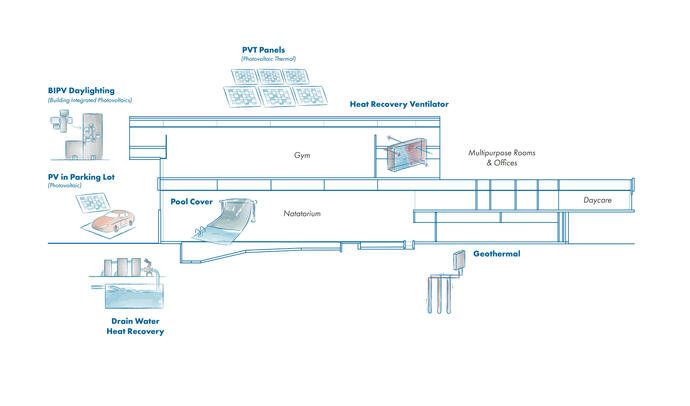We're often asked what the next big trend in sustainability will be, and while there are many trends emerging there are two certification programs in Canada that are set to make a serious mark on our building industry.
For New Builds Serious About Zero Carbon.
The Canada Green Building Council’s Zero Carbon Building (ZCB) Standard addresses the crux of the issue we face: carbon emissions. Compared to other certification programs, it is brief, however that is not to imply it is any less rigorous. In fact, achieving certification in either the Design stream or the Performance stream requires a highly efficient building and a serious commitment to achieving zero carbon. The ZCB Standard provides a comprehensive framework to help design teams think about all aspects of emissions – not just operational emissions. This includes looking at the carbon embodied in the materiality of the building, as well as understanding the environmental impact of refrigerants.
Want Real Change? It’s All About Layers.
There is no one silver bullet when it comes to significantly reducing emissions in our buildings. It takes a layered approach to affect real change.
To achieve a zero carbon building, it is imperative to start with drastically minimizing the loads on and in the building. Starting with a high-performance building envelope – including selecting materials to reduce embodied carbon – is a critical component to achieving an efficient, low-carbon building. Optimizing the amount and location of glazing, as well as understanding and mitigating thermal bridging, will enhance the overall performance of the envelope. Next, consideration to reducing lighting energy through the use of highly efficient LED-based systems, including occupancy and daylighting controls, is required. Finally, and perhaps the most impactful component, is the mechanical system selection. Is the system low-carbon? Does it have the ability to transition to low-carbon in the future? How is heat recovery being implemented in the design? How do we maximize heat recovery potential? These questions have to be analyzed (hello, energy modelling) and answered as we drive toward zero carbon. The mechanical system selection impacts on the electrical supply and distribution can also be quite significant, and must be part of the design considerations.
While the ZCB Standard can absolutely be applied to existing buildings, we are seeing more and more new construction projects applying the standard. So, what is happening in the existing buildings realm? Enter deep green retrofits and Investor Ready Energy Efficiency (IREE) certification.

Reducing Emissions In Existing Structures.
IREE certification, offered through the Investor Confidence Project and certified by Green Building Certification Inc. (GBCI), provides a transparent and systematic way to estimate and achieve meaningful carbon reductions in existing buildings. It requires projects to leverage existing standards and practices, such that savings estimates are based on industry best practices and calibrated energy modelling. Implemented projects are then verified through targeted and monitoring-based commissioning, as well as measurement and verification. The IREE process and certification provides assurance to the asset holder and investors that the estimated savings of the deep green retrofit are not only feasible, but also achievable. While IREE certification is a requirement for some investment programs such as the Canada Infrastructure Bank Commercial Building Retrofits Initiative, it is a robust standard that relies on industry-proven best practices that can provide the required confidence for any deep retrofit project.
The Future Is Zero Carbon.
Although challenging, Canada’s drive to net zero will be a wild ride. Certification programs, incentives, energy codes, and regulations will pave the way for our industry to make a meaningful contribution to emissions reductions. And as consultants in the sustainable buildings realm, we get to hold on, climb to the fore, and lead the charge. Let’s do this!











